A few weeks ago, I discussed the difficulties of maintaining a privet hedge. The same could be said of a barberry hedge. A friend reminded me that both are invasive and asked me to suggest some alternatives.
One of the most successful hedges I’ve ever created was a tall one for privacy on the corner of two very busy streets. At that intersection, we planted Viburnum carlesii, the Korean Spicebush. It grows relatively quickly, has beautiful and fragrant white flowers in April, and has not been affected by the Viburnum beetle. It is dense, a necessary element for privacy and has survived many winters even though it is assaulted by salt spray. I accidentally grew one along my driveway that was supposed to be a dwarf but easily attained a height of six feet. Even though full sun and moist sun is recommended, mine grew and bloomed prolifically with only afternoon sun and relatively dry soil. The fall foliage turns various shades of red.

Viburnum x ‘Cayuga’ (carolynshadegardens.com)
For a short hedge, Viburnum carlesii ‘Cayuga’ is similar to the above but only grows three to four feet high and wide. The leaves are heavily veined, dark green. Do not grow this shrub in wet soil. I guarantee that it will die.

Myrica berries-greenfusestock.photoshelter.com
I don’t know why Myrica pensylvanica (Bayberry) is not grown more often as a hedge. It has glossy, dark green, aromatic foliage. The tan flowers are insignificant but eventuate in gray berries that last throughout the winter. This is a very versatile shrub, able to grow in full sun to partial shade and in a variety of soils, from moist but well-drained to heavy clay or light sandy soil or dry soil, and in sites subject to winter salt spray. It can grow quite tall, up to twelve feet, but can easily be kept at any desired height with judicious annual pruning. Many of the bayberry hedges I’ve seen would benefit from such pruning because they tend to get leggy with most of the growth at the top. If you like to use natives, this would be a good one.

Cornus racemosa Geauga®-plants.gardensupply.com
Another appropriate native is Cornus racemosa, the Gray Dogwood. The species grows quite tall (ten to fifteen feet) but two of the cultivars are better suited. Geauga® grows six to eight feet high and four feet in diameter while Huron® grows five to six feet tall and the same in diameter. This plant sports creamy white flowers in May, white berries in late summer on red pedicels, and maroon fall foliage. Neither cultivar will require much pruning. These cultivars are difficult to find. I only know of one nursery in Lake County that grows them but they are worth the search.
If you need a hedge in partial shade, try using Hydrangea quercifolia, the Oakleaf Hydrangea. It is very drought tolerant, once established and has huge white panicles in July. The leaves will attain a maroon tint in shade. The color is stronger in the sun where this shrub can also be grown. The species will grow five to six feet tall but the dwarf cultivars only become three to four feet tall and wide.
As with any hedge, good soil preparation first and then after planting, be vigilant about weed seeds. Mulch and perhaps, use Preen to keep the weeds and volunteer trees from germinating.


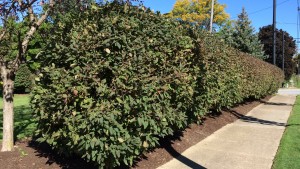
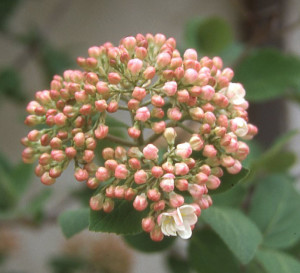
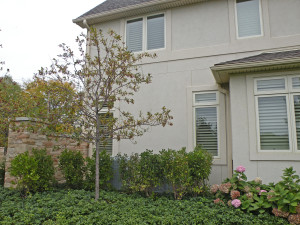
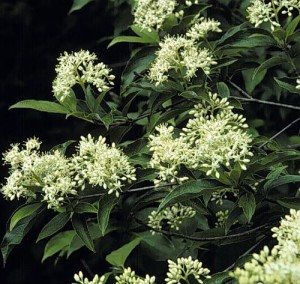

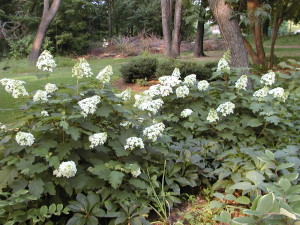
0 Comments